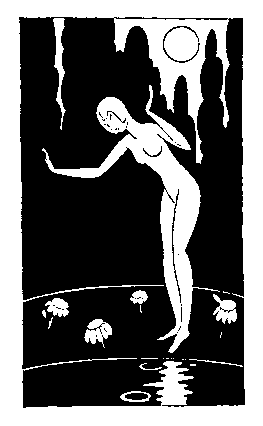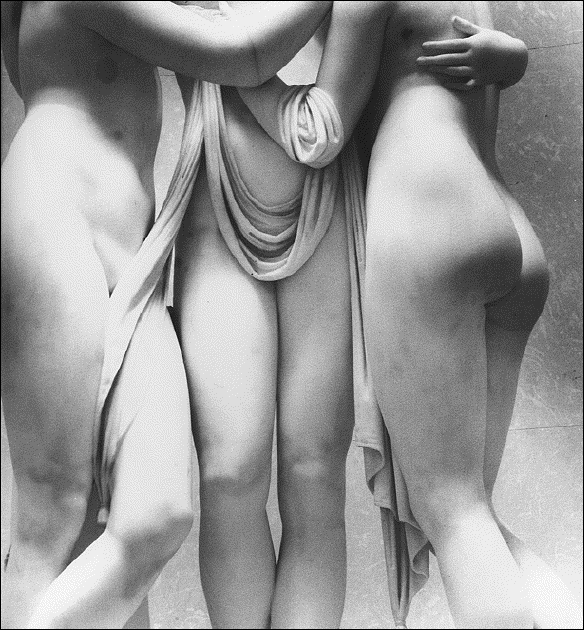Multiple
Personality
Disorder and
The Hi-Rise
Novel
Nudism
 There are at least 100,000 nudists where I live, 0.7 percent of the Australian population, according to the author of Nudism in Australia, spread across a continent. The total figure, he continues, may amount to the population of a sizable city.
There are at least 100,000 nudists where I live, 0.7 percent of the Australian population, according to the author of Nudism in Australia, spread across a continent. The total figure, he continues, may amount to the population of a sizable city.The anonymity of this image --- a city of nudists, abstracted from multiple networks of place and circumstance, hovering as it were in thin air --- is appropriate, given the anonymity of nudism itself. This is apparent in the ground-level experiences Magnus Clarke, the author in question, proceeds to describe: As nudists themselves observe, when they take off their clothes they shed external existence in both practical and symbolic forms.
External existence involves, among other things, differences of status and wealth, differences marked by one's clothing as much as anything else. The relative anonymity of class among social nudists lends a certain democracy to their gatherings, while the first-name only rule in operation at most clubs helps to maintain it. Yet the homogeneity of nudist affiliation does not stop here; in such a state of collective undress, a more meaningful egalitarianism becomes possible: one without even regard to age or sex.
Clarke underlines the paradoxical nature of this last claim: if nudism allows an egalitarianism beyond gender oppression, it means that sexual difference disappears from social interaction in precisely those circumstances in which one would expect it to be most apparent. It is not simply the tradition of desegregated toilet facilities at nudist gatherings that makes this the case, as rather something about the socio-historical texture of sexual desire itself. Desire slides through language; from bustles, to bras, to minis, clothes are our ever-changing symbols of sex, our language for sexual exchange and interaction, the indices to wealth, power and lust.
In divesting themselves of such signifiers, shedding external existence in both practical and symbolic forms, nudists are literally divesting themselves of sexuality itself. At least, this is according to Clarke's informants. As one of them (Mary) puts it: it is the titillation of various clothes that makes someone sexually attractive. Mother Nature usually knows when you should be aroused sexually and it is not at a nudist club.
The taboo on male erections at all the clubs further underlines the difficulties that the patriarchal organisation of sexual desire has in such locales. Which is as much as to say, with Clarke, that the achievement of this nudist egalitarianism is really quite radical. Here men and women are truly equal.
I have explored the political dimensions of Clarke's analysis because I think that his text offers a privileged viewpoint into the desexualised discourses of modernity itself. When Clarke defines social nudists as those who prefer to be naked in appropriate situations in the company of others of both sexes, not all of whom are personally known to the individual, he depicts the sort of community in anonymity which Benedict Anderson sees as the hallmark of the modern nation.
Anderson argues that feelings of national identity are thoroughly imagined. For, such is the size of the contemporary nation, it is literally not possible to know all one's fellow nationals personally. To feel one with them, you must imagine yourself as a homogenous and replicable member of an abstractly conceived community, feeling one with an anonymous mass of like-minded individuals, who themselves feel one with you. The same could be said of Clarke's city of nudists, hovering anonymously over the Australian continent.
Of course Clarke's demographic data aims at the statistical being of nudists, whereas Anderson is far more concerned with the way his subjects think. Anderson's ultimate reference here is to Hegel, who claimed that the spirit of the modern lies in
the unity of the different independent self-consciousnesses which, in their opposition, enjoy perfect freedom and independence
A vision of collective identity he summarizes as I that is We and We that is I. Clarke's researches are not on the multiply self-reflexive level of The Phenomenology of Spirit. Yet if the perfectly democratic I that is We equivalence characterising the Hegelian world-mind has any relevance here, it's surely in the fact that you would have to live in a nudist colony to believe it. Where else is social life so representational, so democratic, so divested of sexual difference?
The Hi-Rise Novel
I want to usher you in to The 14th Floor, a novel-in-progress set entirely on the 14th floor of various buildings in a city like Sydney or Melbourne or both. This cross-section is intended to offer the reader a socioscape, as in Tolstoy or Dickens, only here hi-rise and rather more twisted. The ten characters whose minds I enter into are named, as in algebraic logic, a, b, c, d, e, f, g, h, I, and j. They all live, work, relax, read novels and interact on the 14th floor. Now part of the reason for the theoretical excursion above is that, like any novelist, I have to engage in a necessarily sociological operation, to work out just how my characters exist and interrelate within the environment I have set them. That's why I am reading Hegel. The other reason is that the novel begins in a nudist colony.
A hi-rise nudist colony. At this altitude, with full size savanna land photo-wallpaper all around, a Cambrook tea urn on a nearby trestle table, and next to nothing else, a, who is a professional thief, is trying to come to terms with today's dilemma viz., how do you pick pockets in a nudist colony? It is g, a psychiatrist, who is writing this. The style is clipped, clinical and perverse. The reason g is now writing is that the ten different characters are also the ten different authors of the book. Characters are encountered on a two-fold level, as both author and protagonist. So now d, a transvestite who writes in the horror genre, takes up the story of a's predicament, before the narrative shifts to e, another psychiatrist.
e, who writes situation comedy, proceeds to describe how a's persistent and tormenting erectile failure finally disappears here in the one place given the taboo on male erections in which it would actually be of use. a's eyes widen in fear.
The story is taken up by f, who avails herself of a Wittgensteinian / psychotic reading of all that is the case within this state of affairs to describe b, a nineteen-year-old student radical eating a banana in the nudist club solarium. b is planning an attack upon social justice Christianity for her next politics tutorial. The action moves to a psych ward, where g presides and threatens to withhold his authorisation of d's sex-change unless she start acting like a woman all the time --- no slacks in the consulting room!
As for d, d is terrified that the psychiatrist will discover that she, back as a young man, used to do money-shots for porno films, an occupation in fact not dissimilar, at least in terms of décor, to nudism itself. All this is preliminary to the central focus of the novel, a Neighbourhood Watch Meeting,* featuring all ten characters and based on Plato's Symposium. There is a reference to Kafka's K in all this, only in my novel the characters end at j, a chef interested in psychotic cookery. k is in fact reserved for the reader wandering through (the uni admin block, the psych ward, the nudist colony) the twisted world of the novel, and seeking whatever it is one reads novels for therein.
Can you see why I need a bit of theory to help me out here? For how do you describe the inside and outside of ten different characters, and the concretely abstract hi-rise realm in which they are set, without some theory of how the individual fits within a society? The problem, however, which the social sciences raise for the novelist, is that they tend to picture society as an entity composed of so many like-minded units: the city of 100,000 nudists, the Imagined Community of self- The basis of such representations is the idea of a bounded, homogenous and replicable ego, an identity shared by all. Of course, such fantasies of collective identity have long been subject to critique, from Marx on. For is it really possible to find a collective unity beyond, for instance, sexual difference? Outside the nudist colony? Only this is not quite what is troubling me. For the problem is not that my characters are, each considered individually, so clearly different to each other. The existence of minorities does not, in itself, offer any necessary challenge to the logic of the like-minded unit. After all, you could claim that a - j simply represent 10 different universal or exemplary character types: the exemplary thief, the exemplary nurse, the exemplary reader even. The social sciences can certainly theorise difference on this level, as Clarke's ability to abstract an I that is We city of nudists from the broader Australian social fabric indicates. Indeed, this is what I call the nudist model of subjectivity: the bounded bodily ego and its supposedly unitary identity.
Whereas the issue for me is that these ten characters are all housed within my own head. I wake up every day and wonder what e will do, how j will describe it, and what citations h, a bisexual librarian, will adduce to the event. The dialogue between my characters may well be fictional, but the fact of the matter is that I need to think in ten different ways --- that is, I need to think as ten different people --- to produce it. For the reality of my project is that there are ten of me. That being the case, the question for me is no longer how does an individual fit within a society, as rather how does a society fit within an individual?
This question, and the creative experiences inspiring it, are going to lead me to a rather unusual perspective on The Phenomenology of the Mind, Hegel's I that is We and We that is I. For the ego is not simply a unitary entity, a monadic part of a social whole. The ego is a multiple, a full society inside your own head. The novel --- along with stage drama and opera --- draws upon this very multiplicity, indeed serves as a privileged site for its expression. I want to use the rest of my paper to illustrate these claims.

